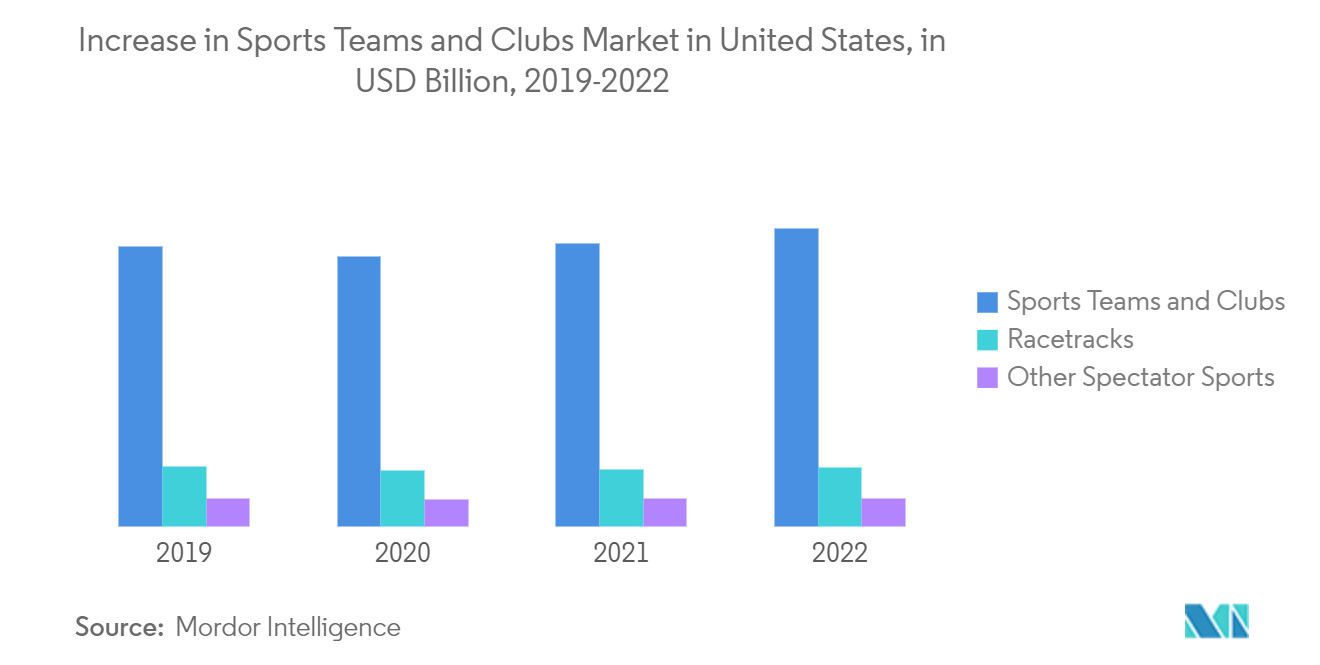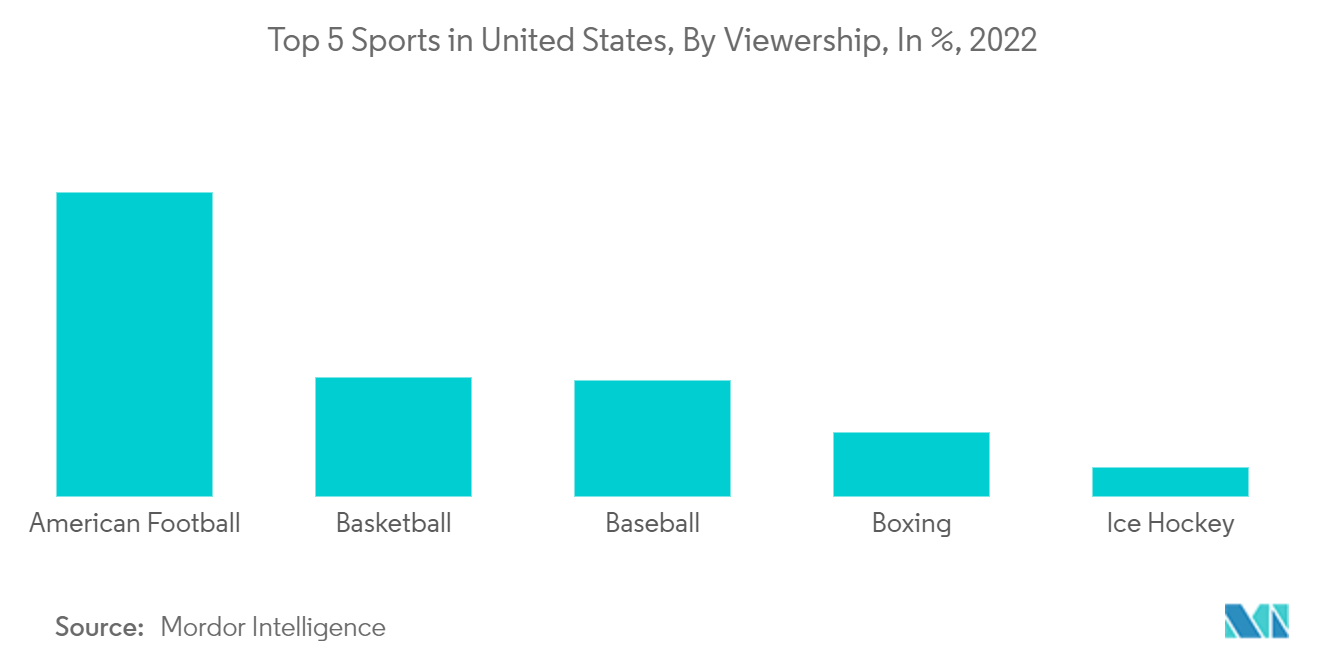Market Trends of US Spectator Sports Industry
Sports Teams and Clubs is Dominating the Market
Successful teams and clubs establish strong brands and identities that resonate with fans. They create logos, team colors, and mascots that become instantly recognizable. The branding is consistent across various promotional materials, merchandise, and online platforms. Teams and clubs prioritize fan engagement to build a loyal and passionate fan base. They utilize social media platforms, official websites, and mobile apps to provide exclusive content, behind-the-scenes access, and interactive experiences. Engaging with fans through contests, polls, and surveys helps to create a sense of community and ownership. Enhancing the in-stadium experience is crucial for attracting and retaining fans. Sports teams invest in state-of-the-art facilities, amenities, and technologies to provide comfortable seating, high-quality concessions, and interactive fan zones. They organize halftime shows, entertainment acts, and special events to make attending games a memorable experience.
The sports industry in the United States is heavily reliant on media coverage. Teams and clubs invest in media relations, ensuring that their games receive significant coverage through television, radio, print, and online platforms. Broadcast deals with major networks and streaming services to help expand the reach of the sport and attract new fans. Many sports teams and clubs in the United States have a global fan base. They actively market themselves internationally through exhibition matches, overseas tours, and partnerships with international brands. The popularity of American sports like basketball, baseball, and American football has also contributed to their global reach.

Football is Dominating the Market
Football has an enormous fan base in the United States. The NFL, with its rich history, iconic teams, and passionate fan culture, has become deeply ingrained in American sports fandom. The sport's popularity is evident in the consistently high television ratings, sold-out stadiums, and widespread interest in football-related content. Football games, especially NFL games, consistently draw massive television audiences. The NFL has secured lucrative broadcast deals with major networks, ensuring widespread coverage and exposure. The Super Bowl, the NFL's championship game, is one of the most-watched television events in the country each year.
Football games are more than just sporting events, they are part of a cultural phenomenon. The pre-game tailgating, halftime shows, and elaborate production values create an immersive and festive experience for fans. The Super Bowl halftime show, in particular, attracts millions of viewers and generates significant buzz. College football holds a special place in American sports culture. The intense rivalries, storied traditions, and passionate fan bases create a unique atmosphere. College football games draw significant attendance and television viewership, particularly during the bowl season and the College Football Playoff. Football receives extensive media coverage, both in traditional and digital media. Television networks, sports websites, and social media platforms provide comprehensive coverage, game analysis, and discussion forums. This constant media presence keeps football in the public eye and generates ongoing interest and conversation.
Football has embraced technological advancements to enhance the viewing experience. From high-definition broadcasts and multi-angle replays to virtual reality experiences, football leverages technology to provide fans with immersive and interactive content. While football's dominance in the United States is mainly driven by its domestic market, the sport has gained international appeal. NFL games are broadcasted globally, and international games and initiatives aim to expand the sport's reach beyond the United States.


